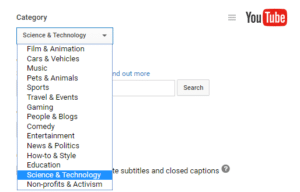
Automatic human action recognition in videos
When a video uploader disregards adding tags and categories, online video hosting platforms encounter what is called the new item problem. This can be solved by utilizing visual analysis of videos and images: first, by filtering videos into recognizable objects and combining human action segmentation and recognition; later, by training Multiclass Support Vector Machines to assign labels to detected actions in the temporal domain of videos.
Read More

Automatic semantic tagging of images
Sites containing huge amounts of content must necessarily recommend only a narrow and relevant list to users. Recommender systems can be seen as tool to automatically generate personalized search preferences, with the purpose of keeping the balance between monetized targeted suggestions and satisfactory user experience. Automatic semantic tagging helps them do just this.
Read More

Automatic video categorization of new item
Online video hosting platforms utilize a variety of methods for content discovery. Recommender systems allow users to face the huge amount of information offered to their view: recommendation algorithms analyze the video and automatically suggest a confined set of adequate tags to the uploader. Alternatively, the system learns to automatically assign tags to videos without any user intervention.
Read More

Visual Search and Video Recommendation
Here is a simple explanation of how a Recommender System work. Take YouTube as an example: a huge quantity of videos needs to be processed, classified, tagged and ranked by users or by an automatic algorithm, before it can be used by the Recommender system. Learn how users are classified by filtering (either collaborative, content-based or hybrid) and videos are ranked by similarity.
Read More
